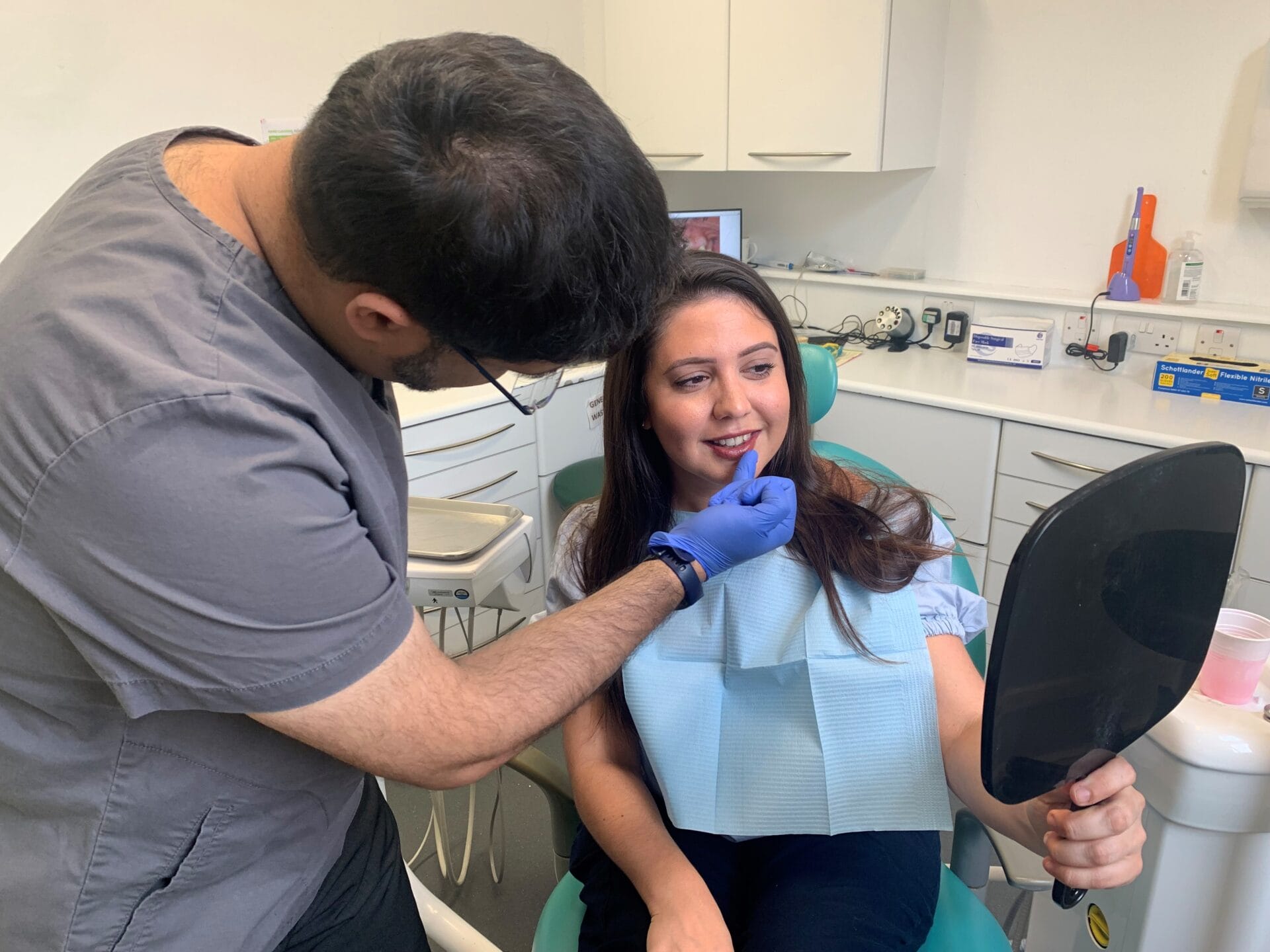Your Overview to Dental Implants Kent: Recover Your Dental Wellness
Wiki Article
Experience the most recent Advancements in Dental Implants Technology
As the area of dentistry continues to develop, the innovations in dental implant technology have actually been absolutely nothing short of remarkable. The assimilation of innovation is transforming the capability of dental implants, promising boosted end results and individual satisfaction.Advanced Products for Improved Toughness
In the realm of dental implants technology, the assimilation of innovative materials has actually dramatically added to enhancing sturdiness and durability of these crucial dental prosthetics. The utilization of products such as titanium alloys, zirconia, and ceramic compounds has actually transformed the field by using enhanced biocompatibility, resistance, and toughness to rust.
Titanium alloys are extensively used in dental implants due to their extraordinary strength-to-weight ratio, deterioration resistance, and compatibility with the human body. These alloys ensure the stability and long life of the dental implant by standing up to the pressures applied during talking and eating, providing a trusted solution for clients looking for long lasting tooth substitutes.
Zirconia, a sort of ceramic product, has obtained popularity for its biocompatibility and natural tooth-like look. Its high toughness and resistance to wear make it an appropriate choice for oral crowns and bridges, improving the total aesthetic appeals and performance of the dental implant.

Digital Imaging for Precise Positioning
The advancement of oral implants innovation has additionally advanced with the integration of digital imaging strategies, ensuring precise positioning of these prosthetics for optimum useful and visual results. Digital imaging plays a crucial role in the planning and placement of dental implants by offering thorough 3D pictures of the person's jawbone framework. This technology allows dental practitioners to evaluate bone thickness, situate important frameworks, and plan the precise position and angle for dental implant positioning with unparalleled precision.By making use of electronic imaging, dental practitioners can create virtual surgical overviews that offer as a roadmap throughout the dental implant positioning treatment. These guides are tailored for each and every individual, considering their one-of-a-kind anatomy and the preferred result. This degree of precision not just improves the success rate of oral implant procedures yet likewise minimizes the danger of difficulties.
Furthermore, electronic imaging allows dental professionals to visualize the final prosthetic restoration prior to the actual positioning of implants, permitting for thorough preparation and ensuring that the end result satisfies the individual's aesthetic assumptions. On the whole, the combination of electronic imaging technology has actually transformed the area of oral implants, offering patients a much more foreseeable, reliable, and patient-specific treatment technique.

Minimally Invasive Surgical Techniques


Innovations in medical strategies have caused the growth of minimally intrusive methods in the area of oral implantology. These methods aim to lower injury to the individual, reduce recuperation times, and improve general therapy end results. Minimally invasive procedures involve smaller sized incisions, specialized instruments, and advanced imaging innovations to exactly position oral implants with marginal disruption to surrounding tissues.
One secret aspect of minimally intrusive strategies is making use of guided surgical treatment, where 3D imaging and computer-aided style software program are used to intend the dental implant positioning with terrific accuracy. This allows for a more foreseeable end result and can frequently get rid of the demand for considerable flap surgical procedure.
Furthermore, advancements in materials and dental implant design have likewise added to the success of minimally invasive approaches. Implants with enhanced surface buildings promote much faster osseointegration, minimizing the healing time called for before the prosthetic restoration can be positioned.
3D Printing for Custom-made Solutions
Making use of 3D printing innovation in dental implantology permits the development of extremely personalized solutions tailored to private client requirements and anatomical variations. This cutting-edge innovation makes it possible for oral experts to make and fabricate dental implants with extraordinary precision and accuracy. By using digital imaging strategies, such as cone light beam computed tomography (CBCT), in-depth 3D models of the client's mouth can be created to direct the dental implant intending procedure.Among the crucial benefits of 3D printing in oral implantology is the capacity to develop patient-specific implants that completely fit the one-of-a-kind composition of each person. view it This tailored strategy helps enhance the general success and long life of the dental implant by making certain optimal fit and placement. Additionally, 3D printing enables the production of complicated geometries and elaborate frameworks that would be difficult or impossible to accomplish using standard manufacturing methods.
Additionally, 3D printing technology makes it possible for dental practitioners to streamline the implantation procedure, minimizing surgery time and enhancing overall person experience. With its ability to produce customized remedies quickly and successfully, 3D printing is reinventing the area of dental implantology, offering clients cutting-edge therapy options and enhanced results.
reference
Integrated Innovation for Improved Capability
Applying advanced innovation in oral implantology improves functionality and precision, boosting the criterion of take care of individuals undertaking dental implant treatments. Integrated modern technology plays an important duty in boosting the general success and sturdiness of dental implants. One crucial development is the combination of electronic scanning and imaging innovations, such as cone-beam computed tomography (CBCT) and intraoral scanners. These tools enable for in-depth 3D imaging of the patient's oral frameworks, helping with specific treatment preparation and implant positioning.Moreover, the combination of computer-aided layout and computer-aided manufacturing (CAD/CAM) modern technology enables the production of customized dental implant remediations with extraordinary precision. CAD/CAM systems use electronic perceptions to create prosthetics that completely fit the client's unique makeup, guaranteeing optimal convenience and capability. Furthermore, making use of robotic-assisted surgical procedure in implant positioning enhances accuracy and lessens the danger of human error.
Verdict
To conclude, the newest advancements in oral implants technology deal boosted longevity with advanced materials, precise placement with electronic imaging, minimally intrusive surgical strategies, personalized services with 3D printing, and enhanced capability with integrated innovation - Dental implants Kent. These developments Clicking Here in dental implants modern technology are changing the area and providing patients with even more reliable and effective treatment choices for recovering their smiles and dental wellnessThe integration of technology is revolutionizing the performance of dental implants, promising improved outcomes and person complete satisfaction.
The evolution of oral implants innovation has actually even more progressed with the integration of electronic imaging techniques, making sure precise positioning of these prosthetics for ideal functional and visual outcomes. Minimally intrusive surgical procedures involve smaller cuts, specialized instruments, and advanced imaging technologies to exactly position dental implants with very little disruption to bordering cells.
Implementing sophisticated technology in dental implantology boosts performance and accuracy, elevating the requirement of care for clients going through implant treatments. Dental implants Kent. Integrated technology plays a crucial role in boosting the general success and resilience of oral implants
Report this wiki page